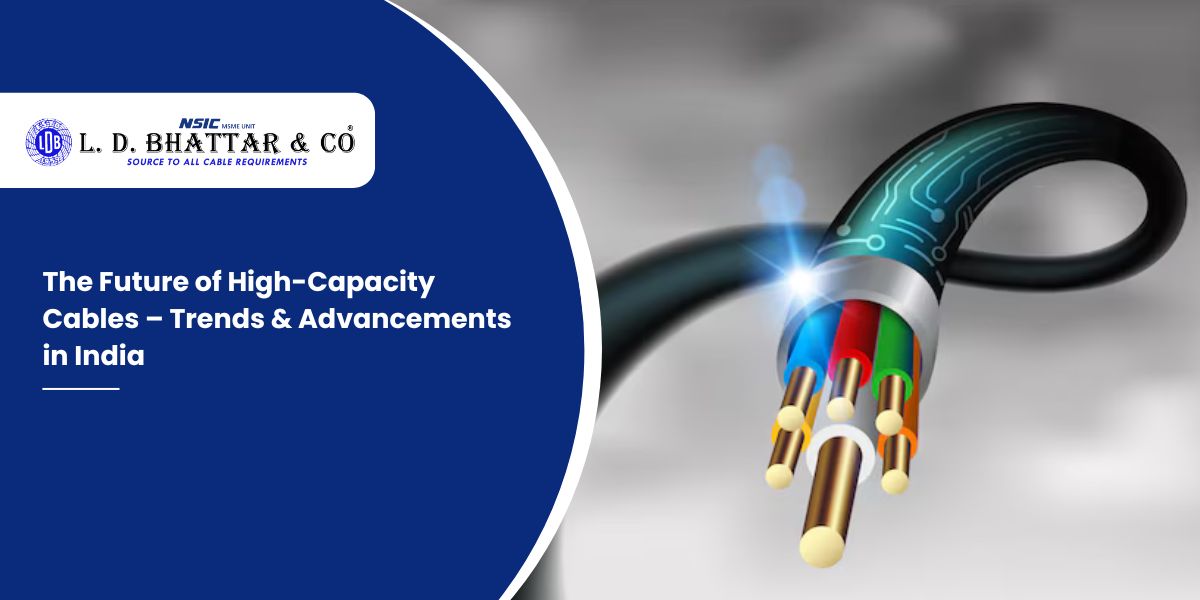The Future of High-Capacity Cables – Trends & Advancements in India

Every factory, hospital, and office building depends on cables to keep the lights on and machines running. Most people don’t think about them until something goes wrong. But in India’s growing economy, the cable industry is dealing with bigger demands and tougher challenges than ever before.
Why the Cable Business is Busy
India keeps building. New factories open every month, cities expand, and the government pushes renewable energy projects. All this growth needs electrical infrastructure that works. That means cables that can carry heavy loads without failing.
High current cables manufacturers in India get calls from steel mills, chemical plants, and manufacturing facilities that can’t afford downtime. These companies learned the hard way that saving money on cables usually costs more later. When a production line stops because of cable failure, it’s expensive.
Solar and wind farms create different problems. Their cables sit outside for years, dealing with heat, rain, and dust. Regular cables break down too fast in these conditions.
Technology That Actually Helps
Cable design has gotten better over the past few years. Some cables now have sensors that warn you when problems start developing. This gives maintenance teams time to fix things during scheduled shutdowns instead of emergency repairs.
Compensating cables manufacturers in India make specialized products for industries where temperature matters. Steel furnaces, power plants, and chemical processors need exact temperature readings. If the cables carrying those signals fail, entire processes can go wrong.
Underground cables work better in crowded cities where overhead lines cause problems. But burying cables means they have to handle moisture and soil pressure for decades.
New Markets Opening Up
Electric vehicle charging stations need cables that can push a lot of power safely. This market didn’t exist ten years ago, but now high current cables manufacturers in India are developing products just for EV applications.
Modern buildings want cables that carry electricity and data together. This makes installation easier and systems more reliable. Factories installing automation equipment have similar needs.
Renewable energy projects keep growing, but they’re tough on equipment. Wind turbines and solar panels need cables that work in harsh conditions for twenty years or more.
Environmental Pressure Changes Things
Companies face pressure to be more environmentally responsible. Compensating cables manufacturers in India now use materials that can be recycled and avoid chemicals that cause environmental problems. Better cable efficiency also reduces power losses during transmission.
Many businesses choose suppliers based on environmental practices, not just price and quality. This pushes manufacturers to change how they make products.
What Comes Next
Several trends point to more growth in India’s cable market. The government invests in infrastructure, industries expand, and renewable energy projects multiply. All of these need quality cables.
Competition gets tougher as more companies enter the market. The ones that survive focus on reliability and service, not just low prices.
Working With Experience
At L.D. Bhattar & Co., we have made cables for Indian industries for over fifty years. We have seen technologies change and markets develop. Our high-current cables and compensating cables work in real conditions because we understand what our customers actually need.
We don’t just sell products. We work with companies to find solutions that fit their specific situations. Our experience helps customers avoid problems before they happen. Get in touch with us to find out how we can help with your cable requirements.
